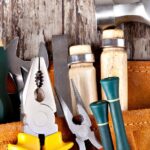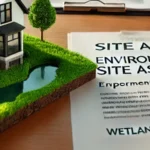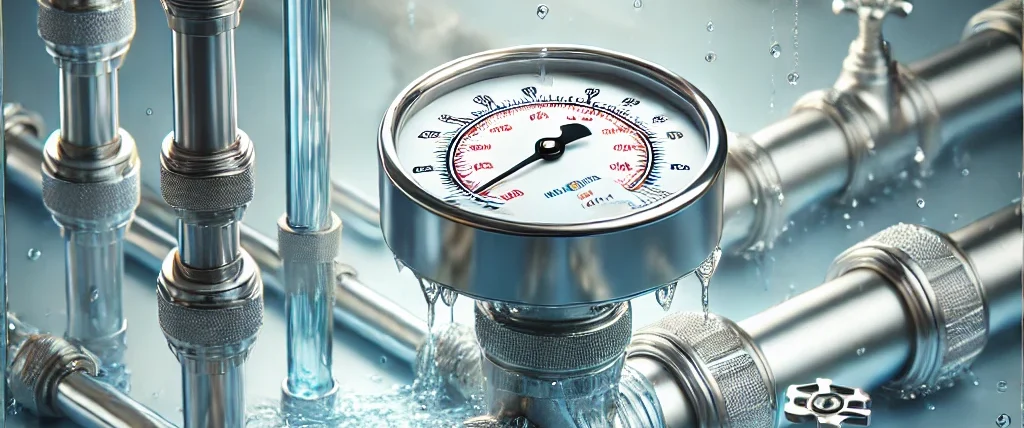Understanding Water Pressure: The Basics
Water pressure is the force that pushes water through pipes and fixtures. It is measured in pounds per square inch (PSI). The standard PSI for most homes falls between 40 and 60 PSI, although this can vary. Adequate pressure ensures water flows consistently and reaches all fixtures in a building.
Too low or too high pressure can disrupt this flow. High pressure may lead to damage, while low pressure can cause weak flow and performance issues. Learning about water pressure can help homeowners better understand how it impacts their plumbing system.
How Water Pressure Impacts Plumbing Systems
Water pressure is crucial in plumbing as it affects both functionality and longevity. Here’s a closer look at how water pressure impacts different plumbing components:
1. Pipes and Fixtures
Pipes, faucets, and other fixtures have limits to withstand specific pressures. When water pressure is too high, it strains pipes, joints, and seals, leading to potential damage or leaks. Conversely, low pressure can affect performance, causing faucets to trickle rather than flow.
2. Water Heaters and Appliances
Appliances like water heaters, dishwashers, and washing machines depend on optimal water pressure. If pressure is too high, these appliances can wear down faster. High pressure forces excess water into devices, causing internal strain. Conversely, low pressure makes appliances work harder, impacting their efficiency and lifespan.
3. Water Conservation and Waste
Excessive pressure often leads to increased water waste. High pressure may seem beneficial, but it usually means more water per use. Controlling pressure can help save water, reduce waste, and lower utility bills. http://mackinnonwatersundridge.com/ offers solutions that address these efficiency needs.
The Science of Regulating Water Pressure
To maintain optimal water pressure, regulators are used. A water pressure regulator is a valve that reduces incoming pressure to a safer level. Here’s a look at how they work:
1. Mechanics of Water Pressure Regulators
A regulator reduces PSI by constricting the water flow before it enters a home’s pipes. This is done through a spring-loaded diaphragm. As water enters the regulator, it’s slowed to prevent high-pressure damage in the pipes.
2. Adjusting for Pressure Consistency
Regulators allow for adjustment, so homeowners can set pressure to the ideal range. Typically, 50 PSI is a good balance for household needs. Higher settings, such as 70 PSI, can be appropriate for certain large homes, but the risk of overpressure issues increases.
Signs of Water Pressure Issues
Several signs can indicate an issue with water pressure. Recognizing these early can help avoid costly repairs.
1. Unusual Noises
High water pressure can cause pipes to vibrate, often producing loud knocking or banging sounds. This is known as water hammer and occurs when water flows forcefully through narrow or sharp turns in the pipes.
2. Increased Water Bills
If water bills rise unexpectedly, high pressure could be the cause. Excessive water pressure leads to higher usage, even if daily routines remain the same.
3. Dripping Faucets or Leaks
Water leaks may stem from pressure that is too high. If faucets or pipes leak frequently, consider checking PSI levels. Leaks are not just a nuisance but can lead to structural damage if left unaddressed.
Water Pressure Testing and Maintenance
Monitoring water pressure regularly is essential for a healthy plumbing system. Here’s how homeowners can maintain optimal pressure:
1. Testing with a Pressure Gauge
Testing water pressure requires a simple gauge, available at most hardware stores. Attach the gauge to a faucet, typically an outdoor one, and turn it on fully. Readings should ideally fall between 40 and 60 PSI.
2. Adjusting Pressure Regulators
If the PSI reading is too high or low, adjust the pressure regulator. This device is usually found where water enters the home, near the main shut-off valve. Adjusting the regulator can resolve many pressure issues and prolong plumbing life.
Finding Professional Help
While DIY pressure adjustments are possible, complex issues require expert help. Professional plumbers can identify hidden problems, such as internal pipe damage, and recommend solutions for lasting improvements.
Optimizing Water Pressure for a Healthier Home
Water pressure plays a vital role in the health of a plumbing system. Managing it well can lead to savings on repairs, lower water bills, and a better-functioning home. Regular testing, monitoring for warning signs, and maintaining PSI levels within the safe range are key steps in keeping water pressure under control.
With the right approach to water pressure management, homeowners can protect their plumbing systems and avoid unnecessary expenses over time.









